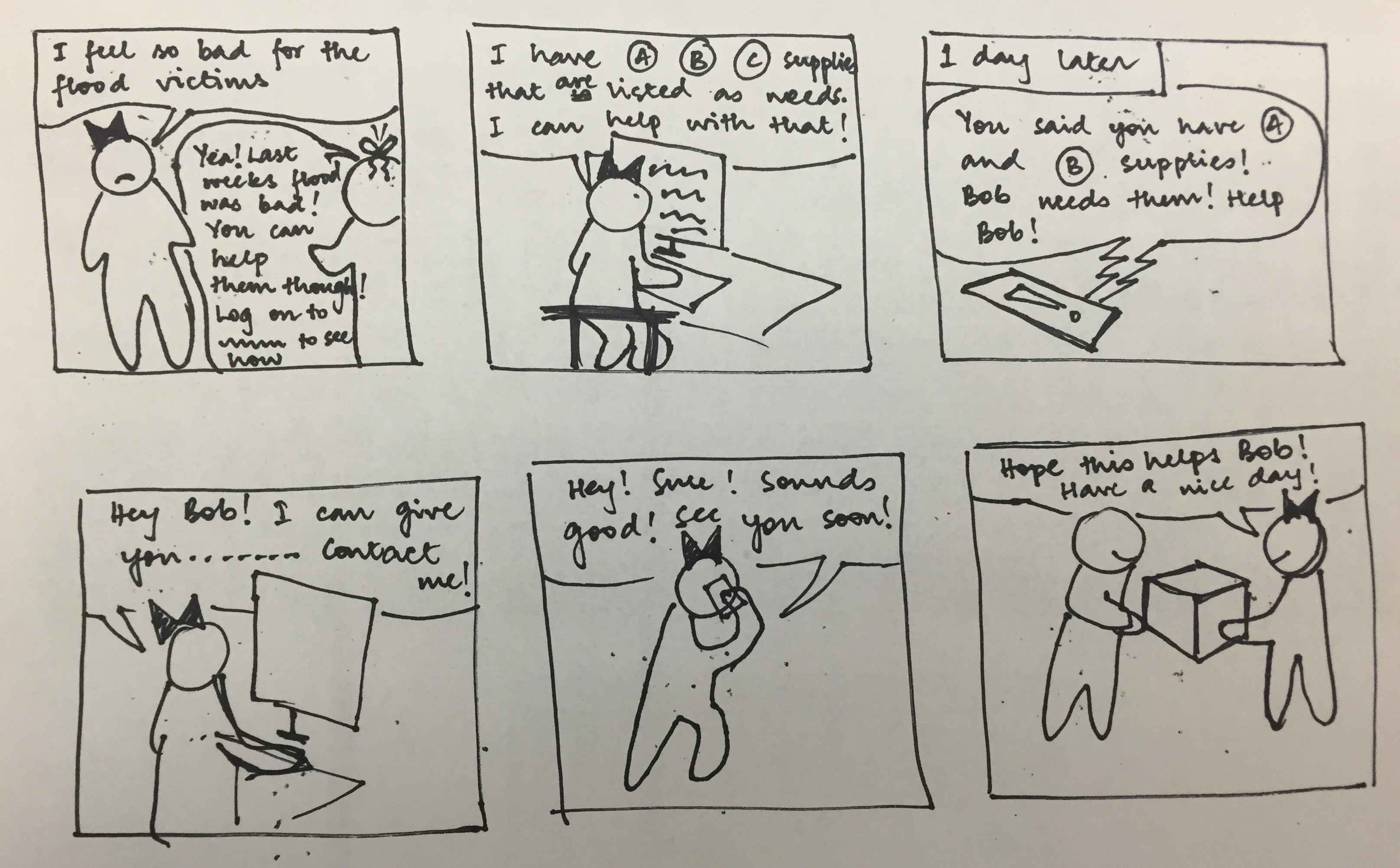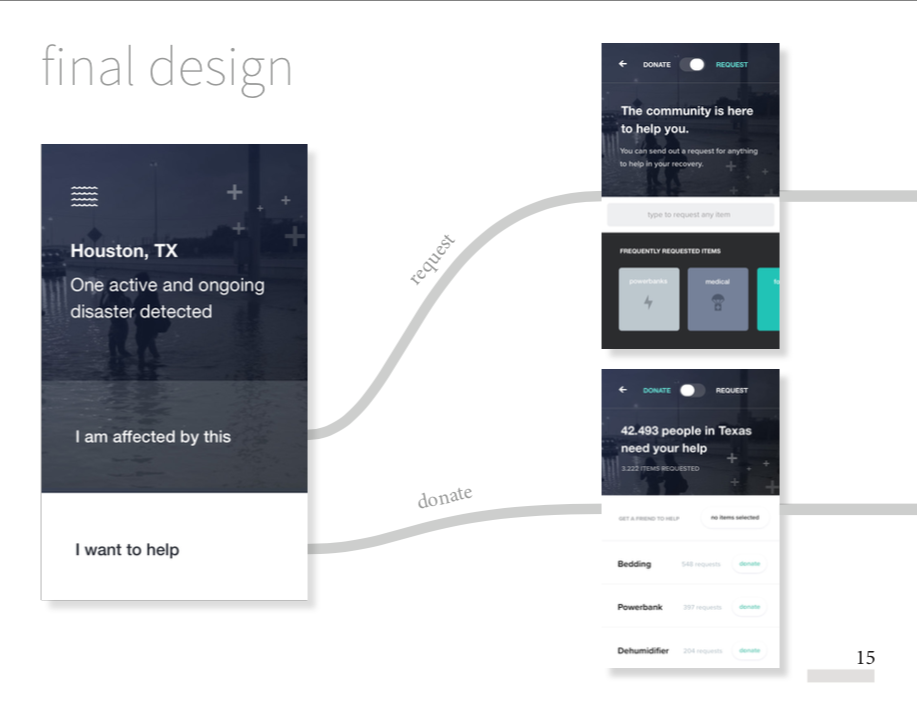Peer Economy in Emergency Response
Peer Economy in Emergency Response
December 2017
Under an expected flood, instead of waiting for the outside supplies to arrive, the affected people can make use of their local peer economy to form their own donation network.
Task
This group assignment focused on two things: the mix of emergency response with peer economies, and responsive web design. We primarily investigated in floods as our target disaster.
We need to think about how the “responsiveness” can be stretched for different target audiences: For example, who will be primarily using the mobile site, and who will be on a desktop? We also needs to justify why web app instead of mobile app in this context.
I grouped with three other people, both master students in HCI. In this assignment my primary focus was on the research part. I was also in charge for the process book.
Research
After the disaster relief topic was decided with the help of affinity diagram, we conducted the Guerilla research, and come up with many different personas, such as rescuers, government workers, reporters, affiliates of the victims, etc. With some evaluations on the design opportunities, we picked donators and victims as our personas.

We were working on the affinity diagram to explore the potential design opportunities.
Based on our researches, we narrowed down the stage of the disaster relief to exactly the point when the water retreats, and people start to move back and clean the mud out -- and this is when problems rise.
People may not receive their help on time. Even if they do, in many situations the supplies is not what they are looking for. And this is where a peer economy can be helpful.
We came up with a system to allow people borrow the items online. The donator registers their available items, and the borrowers can browse for whichever items available, and pick them up later.
Design
We speed dated our storyboards, and people were generally satisfied with the model. There were a few concerns raised, such as damages done to the borrowed items, and unguarded houses. To accomodate these, we switched to a donation system, and introduced a driver's unit.

Storyboard for the donator.
We started with screen maps, then move on to the wire-frames and the final high fidelity design.

Screenshot from the final design. The flow splits into the donator path and the victim path for different targets.
Check out more
Conversational UI for Outdoor Safari
Conversational User Interface Concept Design for outdoor explorations.